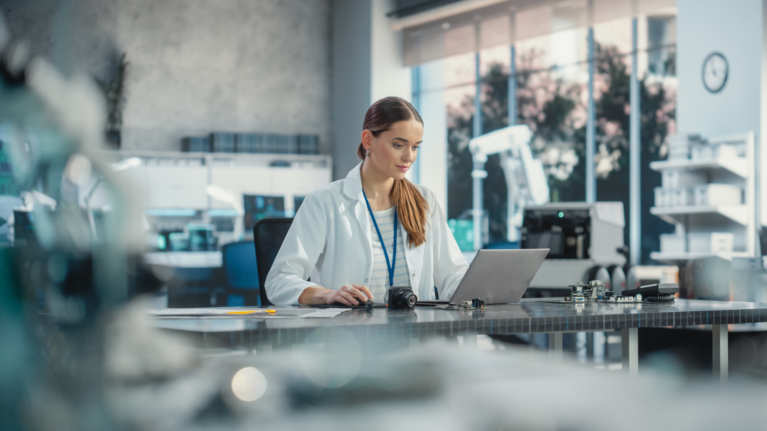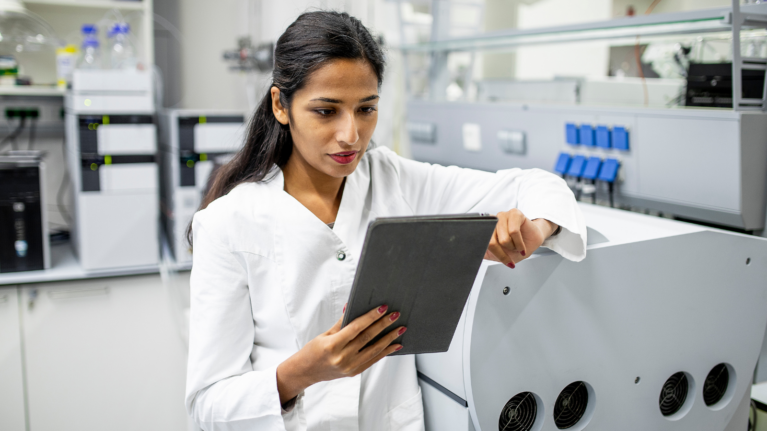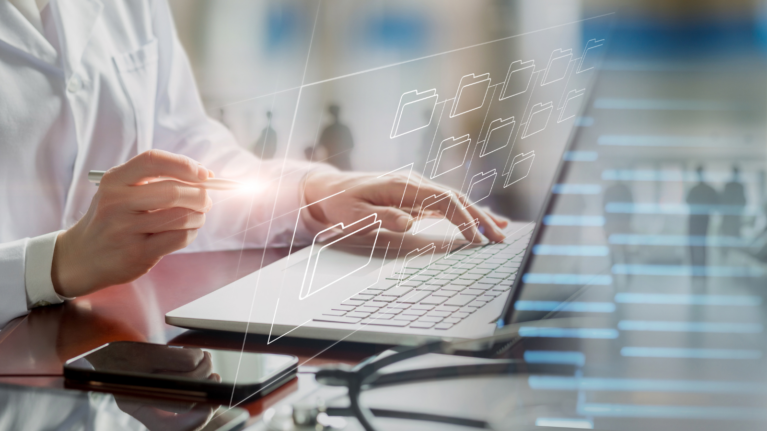

Digital lab platforms that enhance collaboration between chemists, biologists and informaticians are becoming the norm in a post-pandemic world.
Near the height of the COVID-19 pandemic, Boston University made the bold decision to resume in-person learning for its autumn 2020 semester. Part of that choice stemmed from the fact that the campus had developed its own facilities capable of testing thousands of swabs, and delivering results in less than 24 hours.
To realise its rapid testing approach, the university turned to eLabNext, a specialist in helping laboratories develop digital infrastructure. Through gradual scale-ups, the partnership developed a software solution that integrated robotic sample handling with the electronic medical records of 40,000 employees and students.
“We were smack in the middle of it, making sure the robotic systems could orchestrate the data flow to run up to 10,000 tests a day some weeks,” recalls Erwin Seinen, co-founder and managing director of eLabNext. “It took a lot of collaboration between many vendors to make that happen.”
Just a few miles away from Boston University sits another high-profile advocate of collaboration: Flagship Pioneering, one of the world’s leading incubators of biotech talent. Most famous for its early backing of Moderna and its messenger RNA (mRNA) technology, this venture capital group now supports several start-ups focused on improving human health and sustainability using data-intense techniques.
“It’s hard to imagine a Moderna without the integration of these data infrastructures at the outset,” says Aram Adourian, senior science advisor at Flagship Pioneering. “Moderna really compressed the time needed to move drug candidates from research to clinic to manufacturing. That’s certainly an archetype for the future of biotech in life sciences ventures.”
Moderna’s accomplishments with mRNA during the pandemic prove that biotech can change the world, particularly if chemists, biologists and data scientists can work together with minimal time lags. Building the digital infrastructure needed to achieve that goal should be a key consideration for any biotech enterprise that aspires to agility.
Breaking down barriers to connectivity
mRNA vaccines are a prime example of collaboration in modern biotech, from the chemists needed to create special lipid nanoparticles that enable the vaccine to pass through cell walls, to the informatic specialists whose modelling identified possible candidates faster than expected.
“In our groups, experiments are often planned between wet lab teams and computational teams, enabling a sort of iterative, back-and-forth optimization process to address the biological questions at hand,” says Adourian. “You have to establish these partnerships early, particularly at the experimental design stage.”
According to eLabNext co-founder Wouter de Jong, biotech labs eager to be at the forefront of innovation are quick to adopt tools such as electronic lab notebooks (ELNs) to ensure accurate record-keeping and compliance with audit trails. What seems to hold many customers back from the improved collaboration is a lack of data connectivity.
“One challenge is that these labs are full of different software tools — spreadsheets, databases on a laptop somewhere — we’re breaking through these silos to provide a unified data management system,” says de Jong.
“Accessibility is a real issue,” adds Seinen. “You don’t want to get into a black box situation, unable to get your data out.”
Data accessible to every scientist
Unnecessary compartmentalization is a problem that persists with digital lab platforms designed for specific fields. “Even the way that chemists and biologists search for information can be different, so when organizations look for a one-size-fits-all software for their lab, inevitably someone gets left out,” says Seinen. “From our experience, to have a truly working platform, it has to be accessible to every scientist.”
To achieve interoperability, eLabNext’s platform allows users to choose specific add-ons to address their needs, similar to the app-picking process on a smartphone. Options range from chemistry to genetics and plant biology, all feeding into an umbrella platform where different fields can come together. Getting a bird’s-eye view of a whole lab’s operations also helps support business decision-making.
Building a unified software environment that makes sense to all scientists is one key to a lab’s digital health, but the ability to manipulate the data with programming tools such as software development kits (SDKs) and application programming interfaces (APIs) is increasingly important. “In pharmaceutical manufacturing or even COVID-19 lab tests, you’re going to need to interact with robotics and other software solutions,” says de Jong. “Having APIs allows you to push and pull data out of the system in a very structured manner and allows all these systems to work together.”
Other researchers may find it necessary to create their own tailor-made data analysis and management software using SDKs. To give software vendors a leg-up, eLabNext offers a marketplace where these tools can be accessed by interested users. “It’s an open ecosystem — we invite any player out there who wants to provide digital solutions to their customers,” says de Jong. “It’s fully customizable and there’s lots of commitment from our partners, both established and new.”
What’s FAIR is fair
At Flagship Pioneering, Adourian notes that labs adhere to FAIR Data Principles, a philosophy developed by a scientific consortium in 2016 that aims to guide researchers to produce and publish data that is findable, accessible, interoperable and reusable. Achieving these goals means taking a holistic approach to digitalization. While these principles were straightforward to implement on the computational end of Flagship’s businesses, Adourian notes that the digital transition in wet labs required more foundational thinking.
“There’s a larger set of challenges,” he says, referring to the huge volumes of heterogeneous data that are generated by, for instance, genomic and proteomic technologies. Where will this information be housed, and how will scientists and data analysts relate to it? “This speaks to the metadata that platforms like eLabNext can extract for downstream analysis, and then iterate and reintroduce the analysed datasets back into the platform.”
The use of artificial intelligence (AI) to analyse data-rich workflows is gaining favour in this era of multidisciplinary collaboration — not just once projects ramp up, but from the outset. Adourian reveals that technology companies such as Tesla and Facebook are serving as inspirations for many biotech start-ups.
“Tech companies, they’re sitting on large caches of data that they leverage and merge to identify opportunities for innovation,” he says. “We’re aiming to apply AI where it makes sense and using different flavours of it across the continuum, be it from high-throughput molecular data such as gene expression, all the way down to manufacturing processes and regulatory approval.”

 By Wouter de Jong
By Wouter de Jong
Improve the efficiency of your laboratory environment through digitalisation with eLabNext digital lab solutions.
Read more
 By Zareh Zurabyan
By Zareh Zurabyan
Explore the evolution of biotech software trends and uncover the advantages of subscribing to biotech SaaS platforms.
Read more
 By Zareh Zurabyan
By Zareh Zurabyan
Discover the hurdles, impacts, and solutions in managing diverse data types in life science and biotech laboratories.
Read more
Schedule a Personal Demo for friendly expert guidance and a free lab workflow assessment.